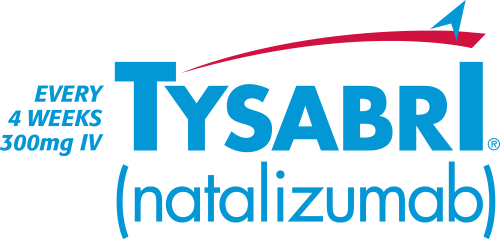Shown to be effective over 15 years
TYSABRI Observational Program: 15 years of results
In a 2-year clinical trial of relapsing MS patients, 627 people were treated with TYSABRI versus 315 with placebo. TYSABRI decreased the average number of relapses per year by 67% compared with placebo (TYSABRI 0.22 vs placebo 0.67).
In addition to the clinical trial, TYSABRI was studied in the TYSABRI Observational Program (TOP). The TOP study is used to further understand the usage of TYSABRI over an extended length of time. We now have 15 years of results.
What was studied?
- The long-term safety and efficacy of TYSABRI in 6321 people with relapsing MS, each at a different point in their journey
- Each person took 300 mg IV TYSABRI every 4 weeks
- Participants took TYSABRI for various lengths of time
- 3993 people discontinued TYSABRI
- Not all have reached the end of the 15 year observation period
- Participants had 3 or fewer infusions before enrollment, and data were collected at doctor visits every 6 months
What are the limitations to the study?
- This study may not be as reliable as a controlled clinical trial; findings are not included in the full Prescribing Information
- Unlike the clinical trial, all participants were treated with TYSABRI, so there was no comparison vs placebo
- Patients participated in countries outside of the US, so results may not have been the same in the US
What was studied?
- The long-term safety and efficacy of TYSABRI in 6321 people with relapsing MS, each at a different point in their journey
- Each person took 300 mg IV TYSABRI every 4 weeks
- Participants took TYSABRI for various lengths of time
- 3993 people discontinued TYSABRI
- Not all have reached the end of the 15 year observation period
- Participants had 3 or fewer infusions before enrollment, and data were collected at doctor visits every 6 months
What are the limitations to the study?
- This study may not be as reliable as a controlled clinical trial; findings are not included in the full Prescribing Information
- Unlike the clinical trial, all participants were treated with TYSABRI, so there was no comparison vs placebo
- Patients participated in countries outside of the US, so results may not have been the same in the US
What was discovered?
SHOWN TO BE EFFECTIVE OVER 15 YEARS

- People who had more than one relapse in the year before starting TYSABRI had a 92% reduction in average number of relapses*
*Compared to average number of relapses in the year before they started TYSABRI (2.509 vs 0.198).
NO NEW SAFETY CONCERNS WERE IDENTIFIED
Findings were consistent with the previous studies of TYSABRI for up to 15 years of treatment.
- 17.8% (1122 of 6321 patients) experienced at least 1 serious adverse event
- The most common serious adverse events were PML and immune reconstitution inflammatory syndrome (IRIS), each with an incidence of 0.9%
- 4.7% (299 of 6321 patients) had at least 1 serious side effect considered or potentially related to treatment
